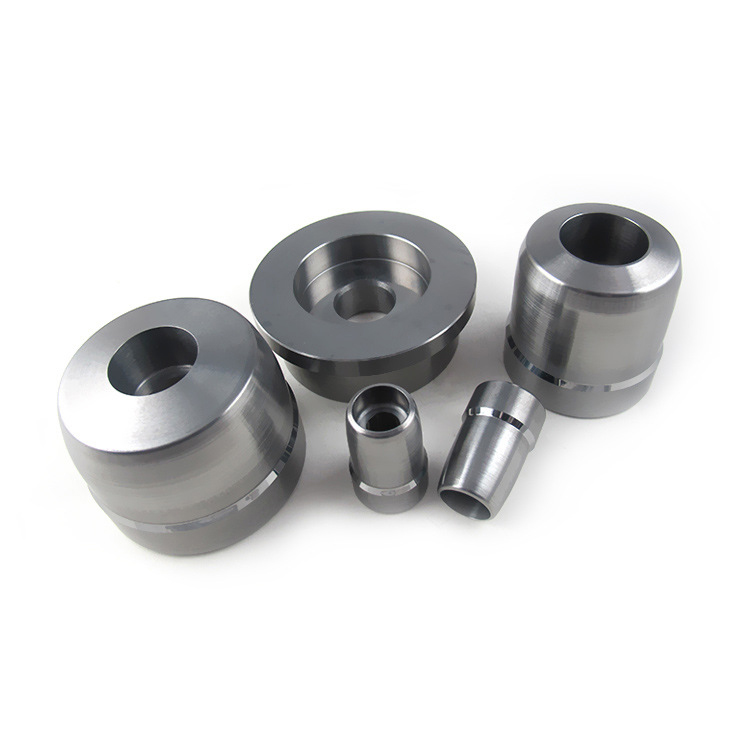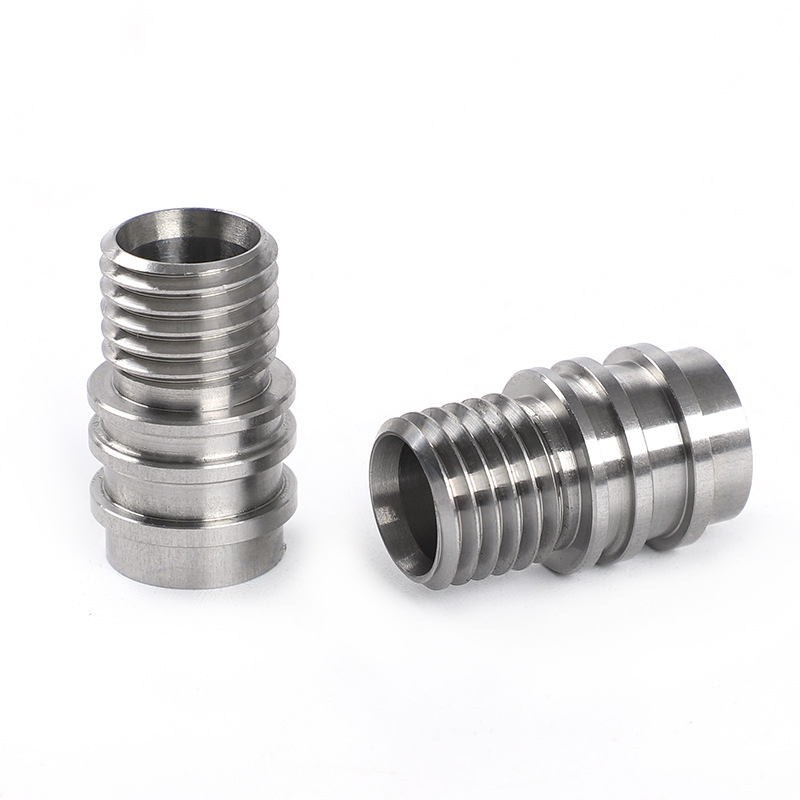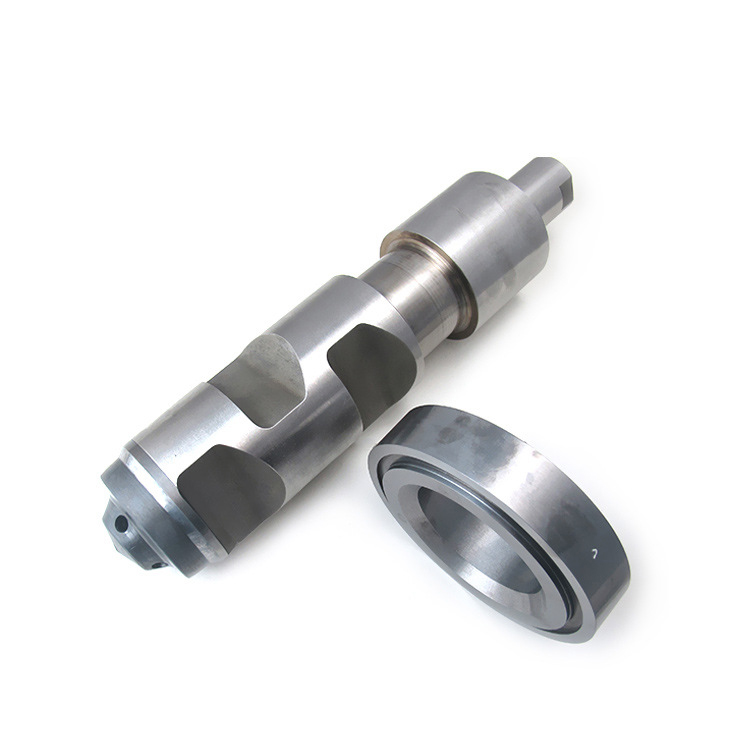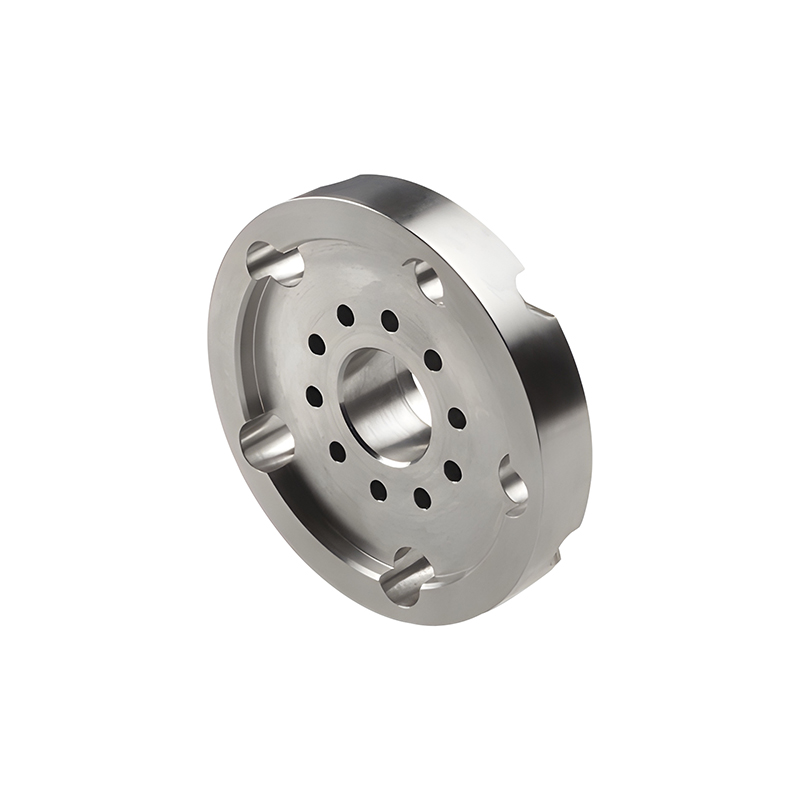Tungsten vs. Titanium: Key Differences, Advantages, and Applications for CNC Machining
Titanium and tungsten are standout metals widely used in CNC machining, from crafting precision jewelry to heavy-duty industrial components. Titanium is prized for its lightweight nature, resistance to corrosion, and hypoallergenic properties, making it a top choice for aerospace and medical applications. Tungsten, on the other hand, boasts unmatched hardness, density, and durability, ideal for demanding environments where strength is paramount. This article explores their unique properties, applications, and key differences to help you select the right material for your CNC machining needs, ensuring optimal performance and cost-effectiveness.Decoding the Material Composition and Core Properties
Tungsten: What It Is

Titanium: What It Is

Chihenghardware specializes in tungsten and titanium CNC machined parts production, offering precision and expertise tailored to your project’s needs. Whether you require the extreme durability of tungsten or the lightweight strength of titanium, partnering with skilled service providers ensures your components meet the highest standards of quality and performance.
Tungsten: The Heavyweight Champion – Uses & Strengths
Where You’ll Find Tungsten
Tungsten is a high-performance material that plays a vital role across various industries. You might recall that traditional incandescent light bulbs relied on tungsten filaments—thanks to tungsten’s ability to emit light without melting under extreme heat. Although these bulbs have largely been phased out, tungsten continues to be indispensable in many industrial applications. For instance, drill bits and cutting tools made from tungsten carbide offer significantly greater durability than those made from other materials.In welding, tungsten electrodes are widely used for their exceptional heat resistance. Due to its high density, tungsten is also an ideal choice for balance weights in aircraft and race cars. In medical and laboratory settings, tungsten is used for X-ray shielding because of its excellent radiation-blocking properties. High-temperature furnaces often rely on tungsten heating elements, which remain stable under conditions that would damage most other materials.
The military sector also leverages tungsten's strengths—armor-piercing projectiles commonly incorporate tungsten to improve penetration against hardened targets. Interestingly, tungsten has also made its way into the world of jewelry, especially rings, where its scratch resistance and sleek appearance make it a popular material.
The Limitations of Tungsten: Important Considerations
Economic factors also warrant attention when considering tungsten. It typically commands a premium price compared to alternative metals such as titanium or steel, potentially creating budgetary constraints for certain projects. While tungsten's remarkable density proves advantageous in specific applications, this same property becomes problematic when weight is a critical factor. At 19.3 g/cm³, tungsten ranks among the densest practical metals, making it potentially prohibitive for weight-sensitive applications like mobile devices or aerospace components.Consider the practical example of tungsten jewelry, particularly rings. Unlike traditional precious metals that jewelers can readily resize, tungsten rings resist modification due to their extreme hardness. Attempts at altering their dimensions frequently result in structural failure. Additionally, certain tungsten jewelry alloys incorporate nickel or cobalt, metals known to trigger allergic responses in susceptible individuals. Emergency situations involving tungsten rings present particular challenges-removal might necessitate specialized cutting equipment capable of penetrating this exceptionally hard material.
These factors necessitate thoughtful evaluation:
Its brittleness renders it potentially inappropriate for environments with significant vibration. In aerospace applications, its substantial weight presents a considerable disadvantage. Even with tungsten's impressive strength characteristics, its density can ultimately restrict its practical utility. For applications involving human contact, such as jewelry or medical implants, allergic reaction potential demands serious consideration.
Titanium: Strong and Light - Why It's So Great
Titanium is a really useful metal because it has many good things about it. One of the best things is that it's strong but also light. This is called a high strength-to-weight ratio, and it's great when you need something tough that isn't heavy. Another great thing is that it doesn't rust easily. This is because it makes a special layer that protects it from things like seawater and harsh chemicals. Also, titanium is safe for people's bodies and doesn't cause allergies. This makes it good for things that go inside the body or touch the skin. Compared to steel, titanium is much lighter. It's about half the weight of steel but just as strong.This can save a lot of weight when building things. It also doesn't crack as easily as tungsten. This means it can handle stress better in some situations. Making things out of titanium is also easier than making things out of tungsten. It's easier to cut and shape titanium. You can even make titanium colorful. This is done by a process called anodizing, which makes it look nice for jewelry and other things. If you wear a titanium ring and need to take it off quickly, it's safer than a tungsten ring. You can cut titanium rings off more easily in an emergency. Plus, titanium is good for the environment because it can be recycled completely. It can also handle heat pretty well, though not as much heat as tungsten. Some types of titanium even work well when it's very cold. Finally, titanium is not magnetic. This is helpful for some special uses. All these good things make titanium a very useful material for lots of different things.
What Titanium is Used For
Titanium's exceptional properties make it invaluable across numerous industries. In aerospace, its remarkable strength-to-weight ratio is perfect for aircraft fuselages, engine components, and landing gear, improving flight performance and fuel efficiency.The medical field extensively utilizes titanium for implants like hip and knee replacements, dental implants, and surgical instruments due to its biocompatibility and corrosion resistance. Sports equipment manufacturers incorporate titanium into golf clubs, tennis rackets, and bicycle frames to enhance performance through lightweight durability.
Titanium jewelry has gained popularity for being lightweight, durable, and hypoallergenic. Chemical processing plants rely on titanium for tanks, pipes, and heat exchangers because of its resistance to harsh chemicals. Similarly, marine applications such as ships and offshore platforms benefit from titanium's immunity to seawater corrosion.
In the automotive industry, titanium strengthens and lightens engine components and exhaust systems. Architecture incorporates titanium in roofing and facades for its longevity and aesthetic appeal. Even consumer electronics like smartphones and laptops may contain titanium components for strength without added weight.
Perhaps surprisingly, titanium dioxide—a white pigment derived from titanium—is widely used in paints and coatings to achieve brilliant white finishes.
Advantages and Disadvantages of Titanium
Titanium offers many advantages, but it does have several limitations. One significant drawback is its cost—titanium is considerably more expensive than common metals like aluminum and steel, which can be prohibitive for mass production or budget-conscious projects.Working with titanium presents technical challenges as well. It's more difficult to shape than iron or aluminum, requiring specialized processing techniques. Additionally, titanium melts at extremely high temperatures and becomes highly reactive when heated, complicating welding procedures that often demand controlled environments and specific methodologies.
Despite its strength, titanium is more susceptible to surface scratching than tungsten carbide, making it vulnerable to cosmetic damage over time. It's also softer than ultra-hard tungsten carbide, meaning it can deform under severe impact. Titanium rings, for example, have limited sizing flexibility—they can only be adjusted slightly larger or smaller, which can be problematic if your finger size changes significantly.
Titanium is also a poor conductor of heat and electricity, making it unsuitable for applications requiring thermal or electrical conductivity. When temperatures exceed approximately 430°C, titanium begins to lose strength, limiting its use in high-temperature environments where tungsten performs better.
The production of titanium is energy-intensive, increasing both its cost and environmental footprint. Furthermore, titanium mining can cause environmental damage, destroying wildlife habitats and degrading soil quality.
Things to Consider When Using Titanium
You need to think about these problems when you want to use titanium. The high cost can be a big deal for some businesses. If they don't have much money or need to make a lot of things, they might choose something cheaper. Titanium is okay with heat, but it's not great when it gets super hot. For things that get really hot, like some airplane parts or factory machines, tungsten might be a better choice. If you need something that won't wear down easily, like tools for cutting hard stuff, tungsten carbide is probably better than titanium. So, you really need to think about what you need the material to do before you decide if titanium is the best option.Tungsten vs. Titanium: A Head-to-Head Comparison
To provide a clear and concise overview, the following table summarizes the key differences between tungsten and titanium across several important parameters:| Property | Tungsten | Titanium |
|---|---|---|
| Melting Point | Highest of all metals (3410-3422°C) | Lower (1668°C) |
| Density | Very High (19.3 g/cm³) | Lower (4.5 g/cm³) |
| Hardness (Mohs) | 8.5-9 (as Tungsten Carbide) | 6 |
| Tensile Strength | High (142,000 psi) | Moderate |
| Scratch Resistance | Excellent | Good |
| Crack Resistance | Lower | Higher |
| Weight | Heavier | Lighter |
| Cost | Higher | Lower |
| Hypoallergenic | Mostly Yes, but depends on alloy (Nickel/Cobalt content) | Yes |
| Common Applications | Cutting Tools, Radiation Shielding, Jewelry, Lightbulb Filaments | Aerospace Components, Medical Implants, Jewelry, Sports Gear |
Picking the Best Metal: Tungsten or Titanium?

Aerospace
For airplanes and spaceships, titanium is really important. It's strong but also light, which is a huge advantage. This helps planes use less gas and fly better. Tungsten can handle very high heat, which could be useful in some parts. However, tungsten is very heavy. This weight often makes it not the best choice for the main parts of planes. But, tungsten can be used in small ways in planes. For example, they can use heavy tungsten parts to help balance the plane.Medical
When it comes to putting metal inside the body, titanium is usually the best choice. It works well with the human body and doesn't rust. This is super important for things like new hips, knees, and fake teeth that stay in your body for a long time. Tungsten is very dense, meaning it's good at blocking radiation. So, in medicine, tungsten is mostly used to protect people from radiation during things like X-rays.Industrial
In factories and other industrial places, tungsten is useful because it's so hard and can handle high heat. It's great for making tools that cut things, parts that don't wear down easily, and things that need to work in hot places like furnaces. Titanium is really good at resisting rust and damage from chemicals. So, factories that make chemicals often use titanium for tanks and pipes because it can handle harsh stuff.-
What is the density of tungsten?
The density of pure tungsten is approximately 19.3 grams per cubic centimeter (g/cm³). This is significantly higher than many common metals.(Density is a measure of how much mass is packed into a given volume. The higher the density of a material, the more mass (and therefore weight) it will have for a particular size or volume.)
-
How does tungsten's density compare to other metals?
Tungsten is significantly denser than common metals like lead and iron. Its density is very similar to that of gold. The density of tungsten is attributed to its atomic structure. Tungsten atoms are both closely packed and have a high atomic mass, resulting in a large amount of mass within a small volume.
-
How heavy is a tungsten cube?
Tungsten cubes are known for their surprising weight, especially for their size. For example:
A 1-inch (25.4 mm) tungsten cube weighs approximately 11.11 ounces (315 grams).
A 1.5-inch tungsten cube weighs roughly 2.2 pounds or 1 kg.
A 4-inch tungsten cube can weigh around 41.62 pounds (18.88 kg). -
How does titanium cookware compare to stainless steel?
Heat Distribution: Stainless steel generally has better heat conductivity than titanium, resulting in more even heating. However, titanium-infused stainless steel cookware can offer improved heat distribution.
Durability: Titanium is stronger and more resistant to dents, scratches, and corrosion than stainless steel.
Weight: Titanium cookware is lighter than stainless steel, making it easier to handle.
Cost: Titanium cookware is typically more expensive due to its unique properties.
Health: Both are generally safe and non-reactive, but studies suggest stainless steel may react with acidic foods over prolonged use. -
How does titanium cookware compare to aluminum?
Heat Distribution: Aluminum is known for its excellent heat distribution, which minimizes hot spots. However, titanium-infused aluminum can offer a good balance of durability and heat distribution.
Weight: Titanium is lighter than aluminum while still being strong.
Durability: Titanium is generally more durable than aluminum and less likely to warp or scratch.
Corrosion Resistance: Titanium resists corrosion better than aluminum.





